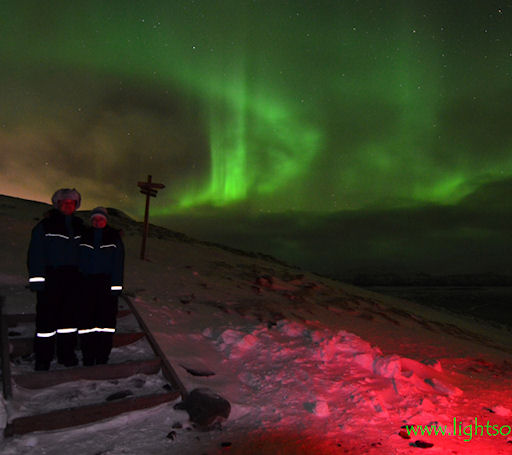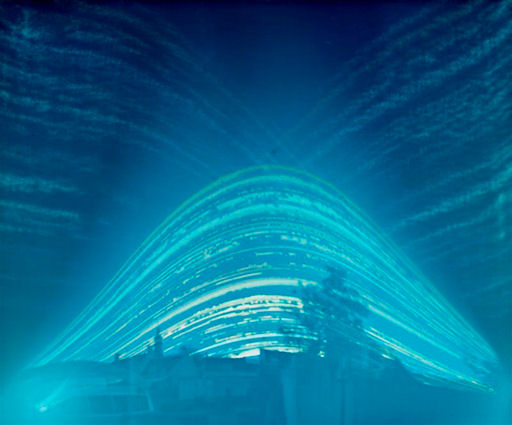These pictures are almost too hot to touch. Metallic photos of the sun make great Christmas gifts. | | | QUIET HOLIDAY: Two small sunspots are emerging to interrupt a 7-day string of spotless suns. Nevertheless, solar activity remains low. Solar flares and geomagnetic storms are unlikely this weekend. JUST WHAT THEY WANTED: Someone must have asked Santa for Northern Lights. Despite a week-long spate of magnetic quiet leading up to the holidays, the skies over Sweden turned green for Christmas: 
Photo details: Nikon D700, Tokina 11-16 2.8, ISO 1600 and 8-10 second exposures
"When I saw the red glow in the snow and the green lights in the sky I could not help but grab the camera and snap a few shots of the Christmas colors," says photographer Chad Blakley of the Aurora Sky Station in Abisko National Park. "It was another great night in Abisko!!" More auroras are in the offing, and this time Santa's assistance will not be required. A solar wind stream flowing from a coronal hole is due to hit Earth's magnetic field on Jan. 2nd. The impact could produce the first geomagnetic storm of the New Year. High-latitude sky watchers should be alert for auroras. SUN IN A BEER CAN: Last July, Jan Koeman of Middelburg, the Netherlands, poked a tiny hole in an empty beer can, inserted a piece of photographic paper, and pointed the pinhole toward the sun. Six months later (Dec. 23, 2010) he extracted the paper and this was the result: 
"This is called solargraphy," explains Koeman. "Every day the sun makes a track across the photographic paper--high in the summer and low in the winter. Daily tracks are interrupted by clouds and, occasionally, absent altogether because of rainy days." It's a low-tech but beautiful way to record the seasons; browse the links below for more examples. more solargraphy: from Rijk-Jan Koppejan of Middelburg, The Netherlands; from Becky Ramotowski of Tijeras, New Mexico;
Lunar Eclipse Photo Gallery
[NASA: "Solstice Lunar Eclipse"] [astronomy alerts]
November 2010 Aurora Gallery
[previous Novembers: 2009, 2008, 2007, 2006, 2004, 2003, 2002, 2001, 2000] Potentially Hazardous Asteroids ( PHAs) are space rocks larger than approximately 100m that can come closer to Earth than 0.05 AU. None of the known PHAs is on a collision course with our planet, although astronomers are finding new ones all the time. On December 26, 2010 there were 1167 potentially hazardous asteroids. Notes: LD means "Lunar Distance." 1 LD = 384,401 km, the distance between Earth and the Moon. 1 LD also equals 0.00256 AU. MAG is the visual magnitude of the asteroid on the date of closest approach. | | The official U.S. government space weather bureau | | | The first place to look for information about sundogs, pillars, rainbows and related phenomena. | | | Researchers call it a "Hubble for the sun." SDO is the most advanced solar observatory ever. | | | 3D views of the sun from NASA's Solar and Terrestrial Relations Observatory | | | Realtime and archival images of the Sun from SOHO. | | | from the NOAA Space Environment Center | | | the underlying science of space weather | | 
